#rue danton
Explore tagged Tumblr posts
Text

Les couleurs de la ville.
Mur
#photographie urbaine#urban photography#couleurs urbaines#urban colors#abstraction#figuration#décor urbain#urban decor#mur#wall#minimalisme#minimalism#rue danton#voltaire#69003#lyon#rhône#auvergne rhône alpes#france#photographers on tumblr#poltredlyon#monlyon#onlylyon#igerslyon#lyonurb#brumpicts#frédéric brumby
78 notes
·
View notes
Text
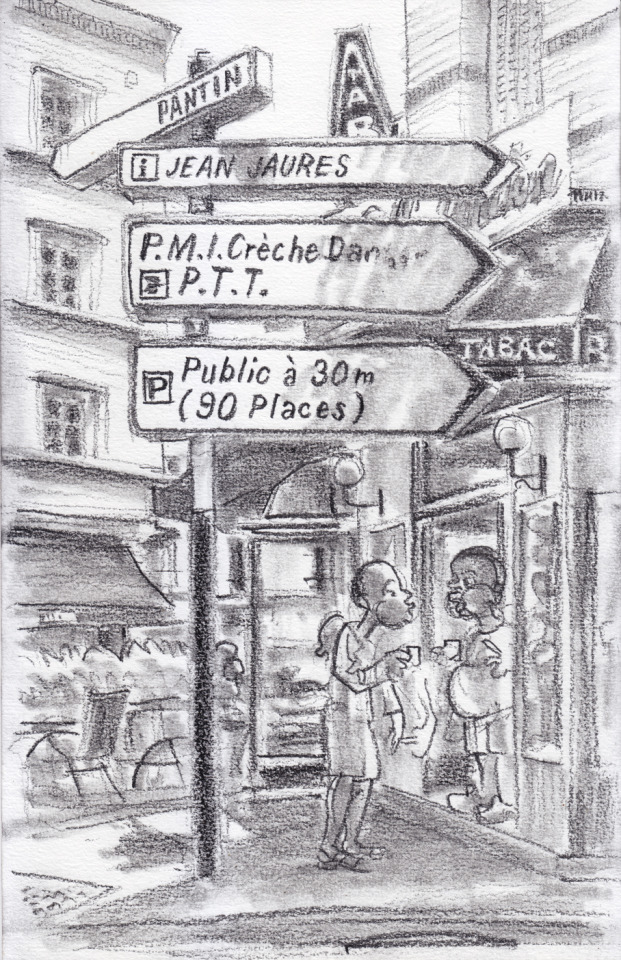
Panneaux à l’angle de la rue André-Joineau et de la rue Danton, le Pré-Saint-Gervais (Seine-Saint-Denis) – craie grasse, carnet n° 138, 11 juillet 2023.
#2023#le pre saint gervais#seine saint denis#rue andre joineau#rue danton#carrefour#panneaux#panneaux directionnels#bar#cafe#discussion#trottoir#tabac#commerce#craie grasse#carnet 138
16 notes
·
View notes
Text

Sur un immeuble Art Nouveau :
Un papillon de grès émaillé
Couleur de marigot
Porte un visage sévère, émacié.
Papillon cauchemar,
Qui virevolte solitaire
Dans la tête vide du faiseur de vers
Quand l’inspiration part.
2 notes
·
View notes
Text
Frev locations compile
Thought of compiling a list of frev significant locations so it can help with recommendations for anyone who happens to be travelling/visiting! This is only done to my knowledge and not a complete list, please feel free to suggest if you happen to know more locations that I completely missed!
so here is the frev pilgrimage list! Long post warning.
(Note: The items are not in any particular order)
(Note: I typed this post up a long time ago but couldn't finish, a lot of thanks to the people who helped out on contributing information and your patience with me.)
Musée Carnavalet (Paris)
This one is very obvious, it is a must go for seeing a collection of frev related artifacts and paintings, including Couthon’s wheelchair, Robespierre’s hair, the most iconic portraits etc. Also its FREE.
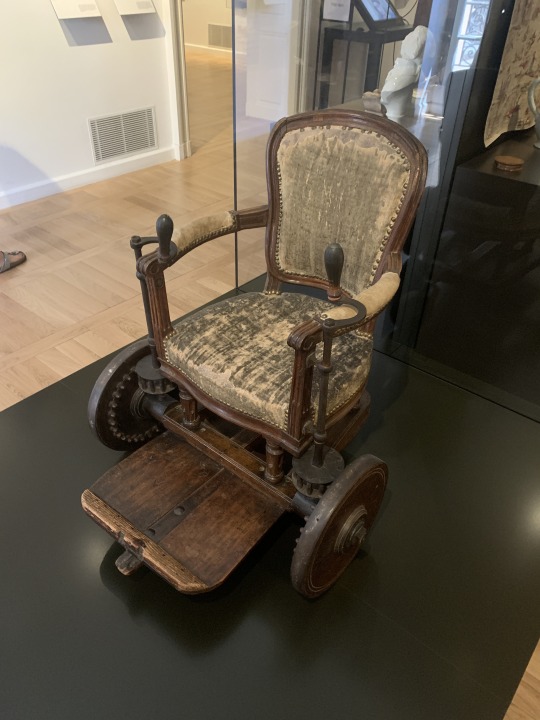
Panthéon (Paris)
You can see the statue of the National Convention deputies. It doesnt have too much related to frev directly, but Rousseau and Voltaire (and Carnot…..) are interred there
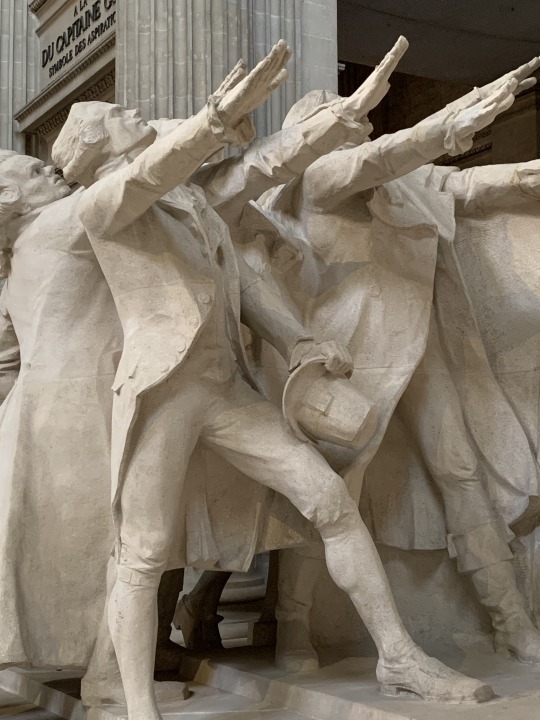
La Conciergerie (Paris)
If you want to see the Deseine bust of Robespierre, but cant go to Vizille, there is a copy of it here within Paris at the conciergerie. It is the place where most frev figures as well as Antoinette spent their last monents.

Musée des archives nationales (Paris)
(June 2023) There is a temporary exhibit featuring frev rn which I highly recommend (also its free to go so like GO)
But beyond the temporary exhibit, I believe there are still a few things in permanent collection (Robespierre’s note book page, Antoinette’s last letter in prison, Comte d’Artois’ letter etc), including the famous 9 thermidor table that Robespierre supposedly lied on. the museum is free to visit.
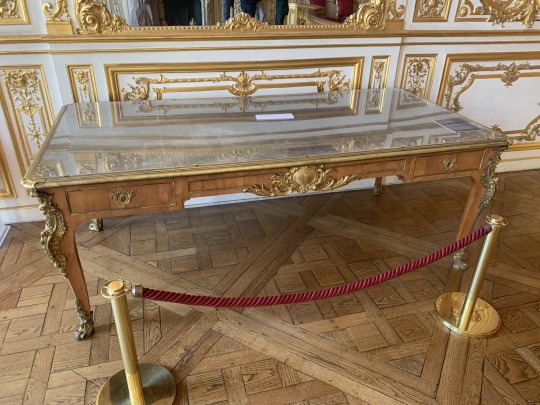
Père la Chaise (Paris)
@robespapier wrote a better post on navigating the cemetery. It helped me so much with finding the graves of Lebas, Elisabeth and Eleonore Duplay! Thank you so much for the guide!

Rue Saint Honoré (Paris)
the current address of the Duplays household is 398 rue saint-honoré, which is now next to a louboutin store…. There is a commemorative plaque there indicating Robespierre’s residence there. Im not sure about going inside the residence….There was construction when I visited and the door was open, heres how it looks on the inside.
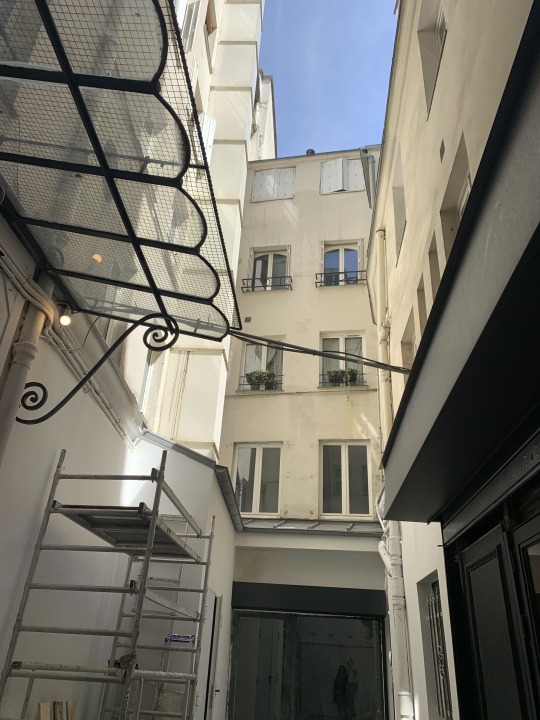

SJ’s bust (Paris & Angers)
I have not visited either of the two locations yet, but you can find that white bust of Saint-Just (that seemed to be modelled after the pastel portrait in the Carnavalet) in either Petit Palais (Paris) or Galerie David d’Angers (Angers). @orpheusmori has posted some Petit Palais pictures here @robespapier has posted some Galerie David d'Angers pictures here
Marat sign (Paris)
i have an image of this plaque sitting on my phone, I forgot where it was located until @orpheusmori helped me track the location of it! It is in the Odéon area and should be in the small narrow street with the back side of Le Procope. It commemorates the location as an important area during the French Revolution as well as the place where Marat established his printing shop.
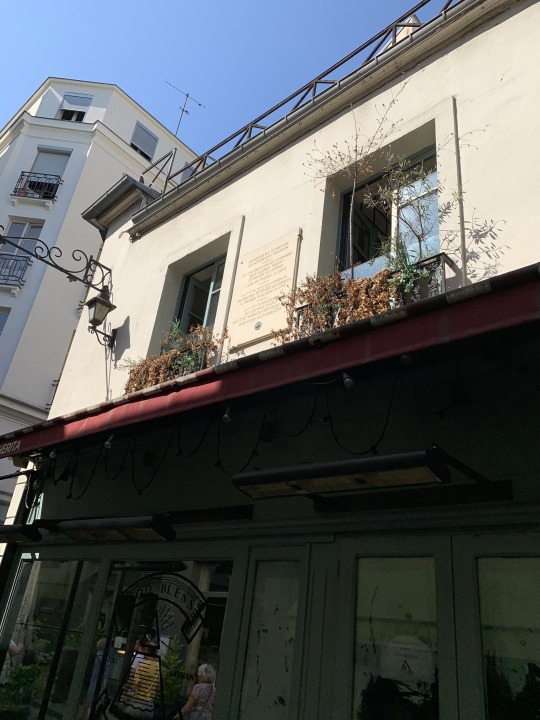
The front of the same building also has another Marat plaque! I didnt know about it before thank you @orpheusmori for finding and contributing the photo! This one is above an Jewellery store (Amour de Pierres) https://maps.app.goo.gl/8X9zgKYpMiLJcULq7
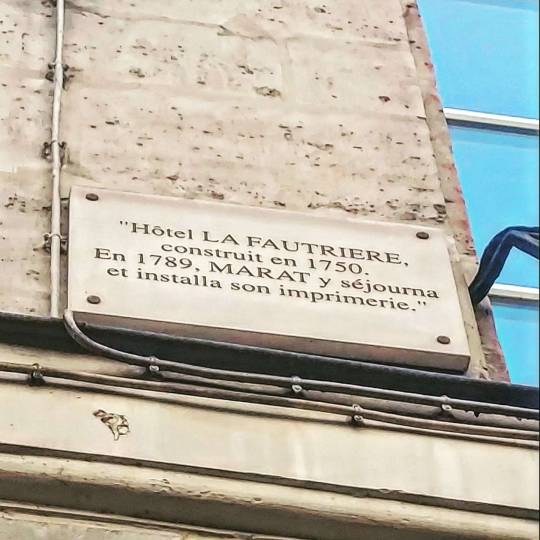
Olympe de Gouges sign (Paris)
Once again, i have a photo of the plaque proving its existence, but I took it years ago and i dont remember where it was exactly.... It was all in the Odéon area, it shouldn’t be too far from the other….
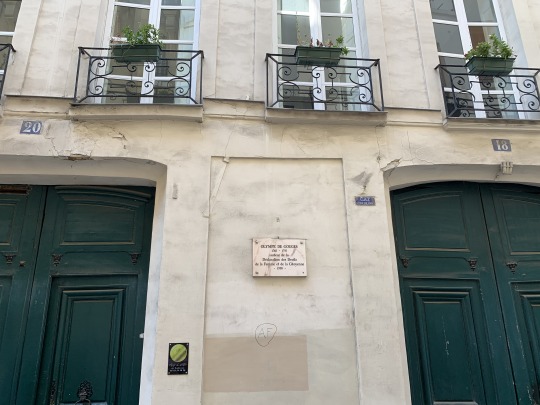
Danton statue (Paris)
there is a Danton statue! Right outside the Odéon metro! You cant miss it. Also the placement of the statue is where he once lived.

Procope (Paris)
Its a really old cafe frequented by a lot of philosophes as well as many frev figures. There is also a bicorn from Napoleon inside. Right now its still a restaurant establishment, and its difficult to visit unless you eat inside….which is expensive…. However ! This whole general Odéon area is full of other frev landmarks (some more mentioned below). Including the metro station which has a bust of Danton.
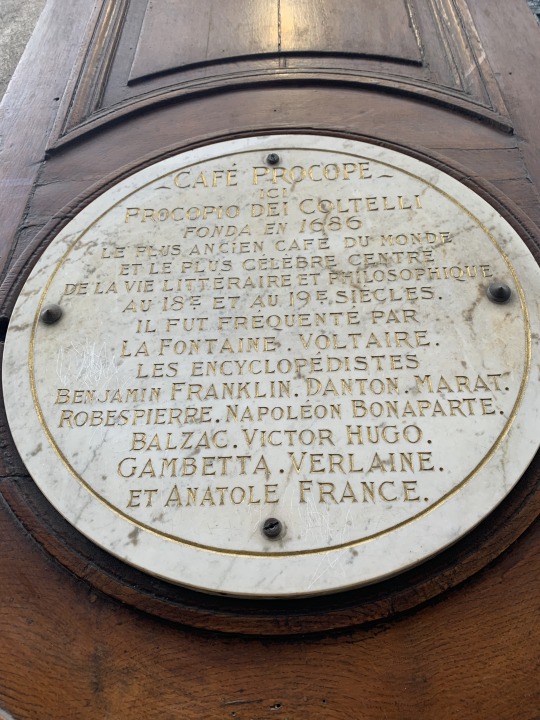
Versailles revolutionary room (Versailles)
Beyond the royal family, there is a room dedicated to a lot of major Revolutionary Army generals and battles. Theres that one painting of Lafayette if u into that
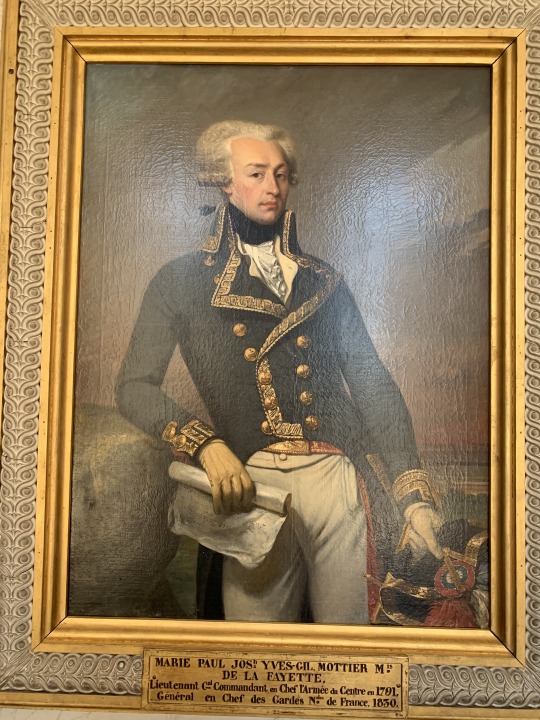
Musée des armes/Invalides (Paris)
It has a significant collection of military artefacts from the French Revolution and its a really good resource for armory researches. The museum also has a sword that belonged to Lafayette, as well as a sword belonging to Carnot during the Directoire (image below)
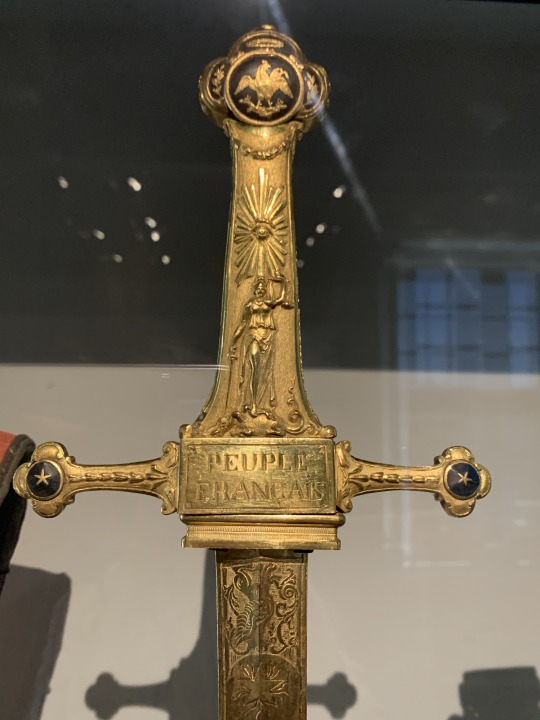
Louvre
The Louvre does not have a lot relating to the French Revolution but it has a few significant paintings and a lot of David’s work. One of the Death of Marat copies produced by David’s studio should be in the museum, as well as a painting featuring the battke of fleurus (with SJ cameo)
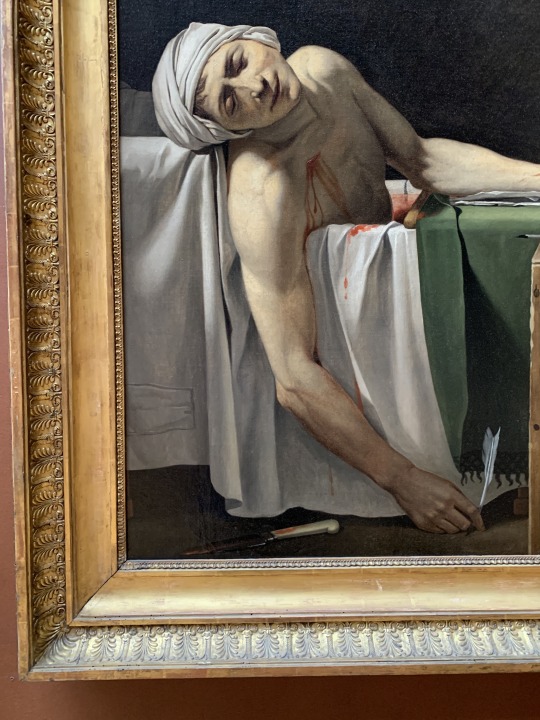
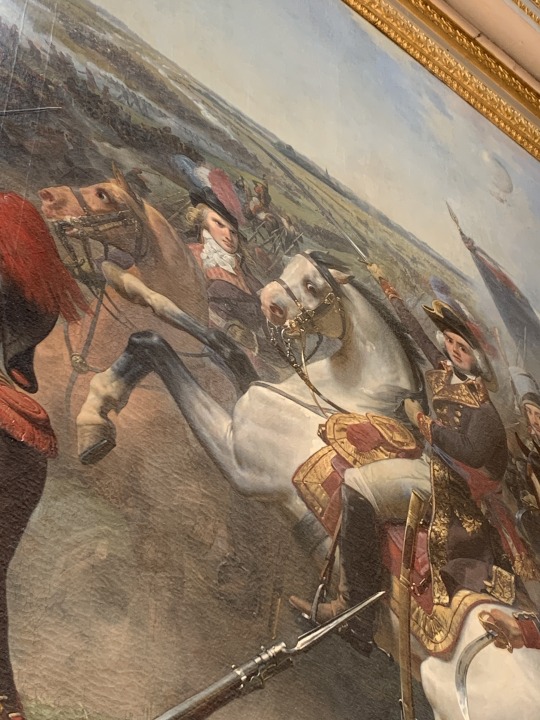
Tennis court (Versailles)
Near the palace of Versailles you can find the room where the deputies swore the famous oaths. It is free to enter, although last time I went it was undergoing construction, hopefully it should have finished by now.
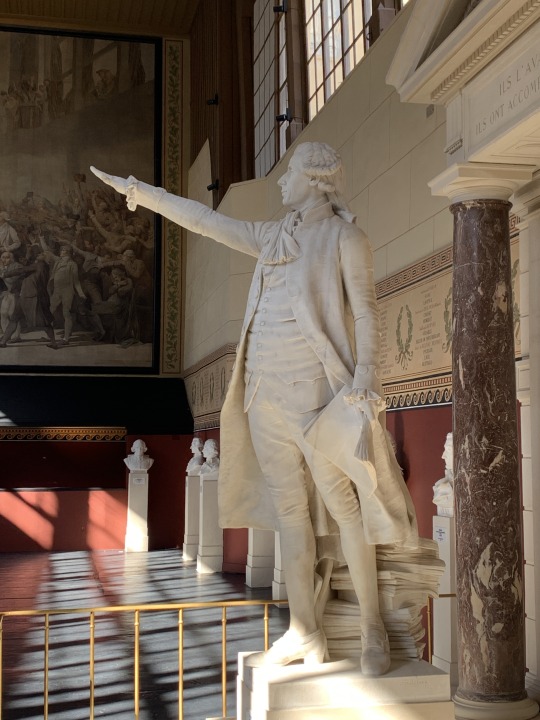
Musée de la Révolution Française (Vizille)
If you can go to Vizille… GO TO VIZILLE! The easiest way by transport would be to stay at Grenoble then take one of the buses that runs between Grenoble and Vizille. It is a whole museum dedicated to the revolution (and it is free) and the park is really pretty. This is where you can find the statue of Marat,
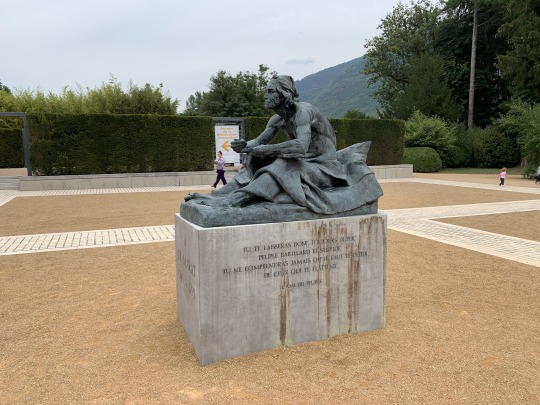
The Deseine busts including dear Bonbon,

And DJ Saint-Just.
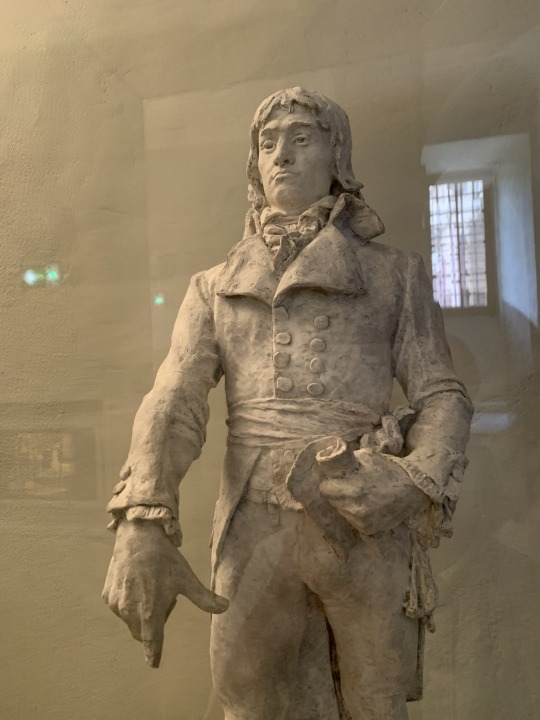
Also special thank you to @citizentaleo for taking me there, I would’ve otherwise been lost in the French mountains lol, thank you!
Maison Robespierre (Arras)
You can visit Robespierre’s residence in Arras. It is possible to visit the inside, but it has a very specific and short opening hours.
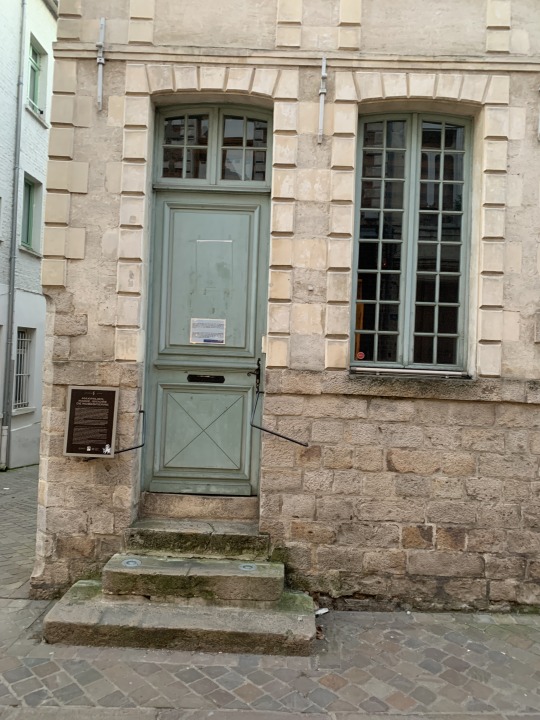
I wasn’t able to go in since I was only in Arras for a few hours….But I got to attend a conference by Hervé Leuwers aaa (He is very sweet and I learned quite few new things from the presentation, but thats post for another day)
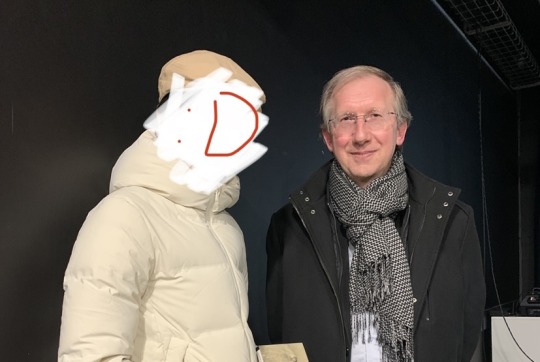
Robespierre metro stop (Paris suburb)
There is in fact, a Robespierre metro station on line 9! Not much beyond name but at least some credit to him! Alas it is not exactly within Paris and just on the outskirt. (Oh and there is also Voltaire)

Cordeliers club (Paris)
I dont have much information on what happened to the original location of the Cordeliers club and how it was modified, but the location is part of the sorbonne campus now i believe. I'd be very curious if anyone knows more information on this.

Place de la Bastille (Paris)
The Bastille is of course not there anymore, but the ground around the square and including the metro stations near by have traces/marks of where the old prison would have stood.
(and yea the picture was taken during a manif)
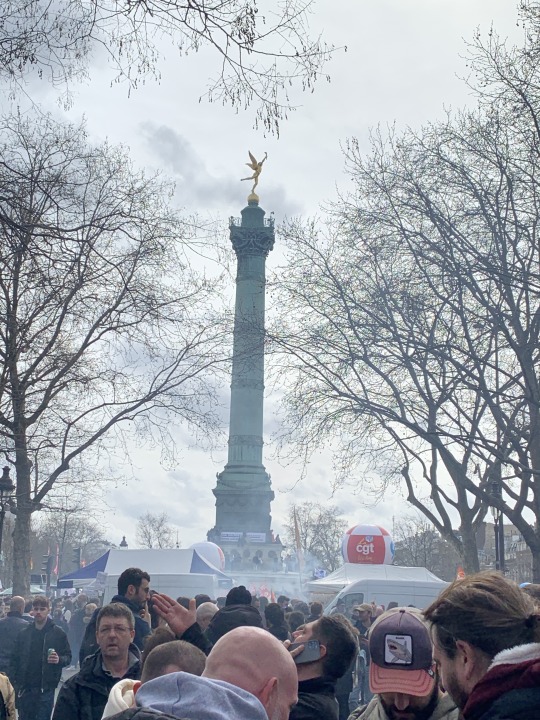
Pavillon de flore (Paris)
The pavillon attached to the Louvre and next to the Pont Royale is the Pavillon de Flore, which is where the Committee de Salut Publique worked.
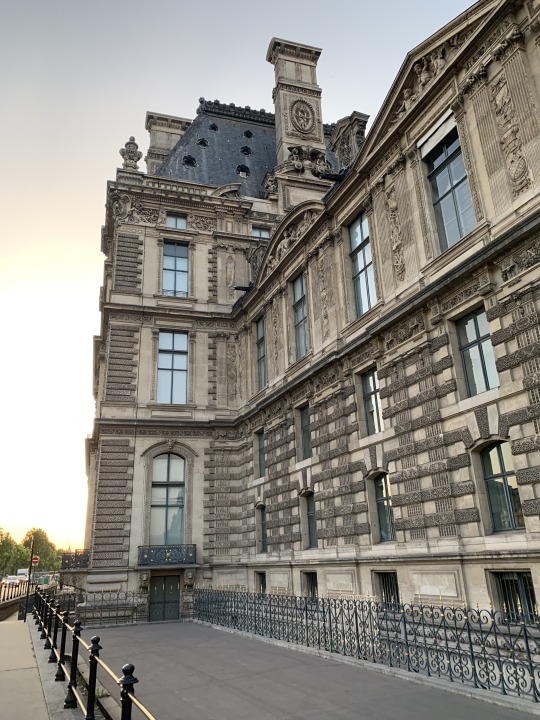
Jacobin club (Paris) Alas the original convent in which the Jacobin gathered is no more and replaced by a commercial centre instead (Passage de Jacobins) . There is a sign however recognizing the place for what it was.
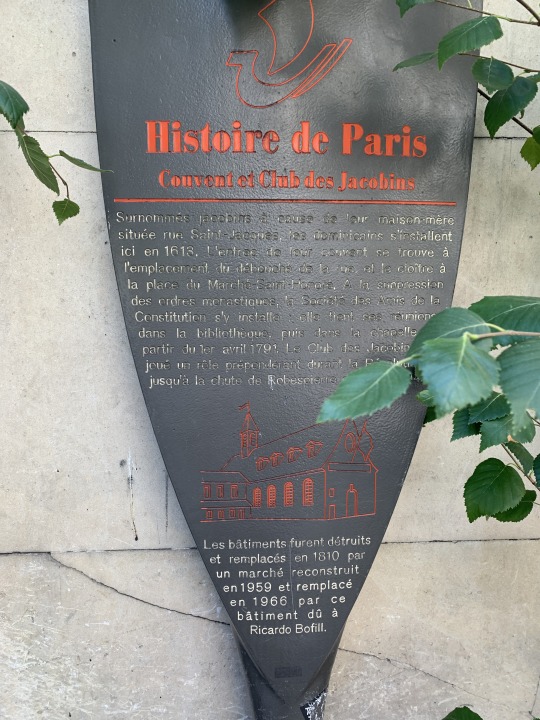
Place de la Concorde (Paris) Originally Place de la Révolution, there is a plaque remembering the executions that took place here near the obelisk.
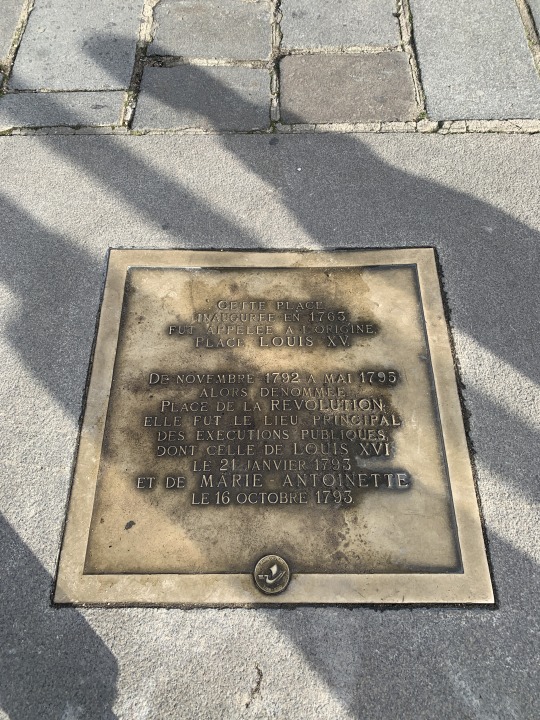
Maison SJ (Blérancourt) I have not been to Saint-Just's house yet, because it is very hard to commute there without a car. But it certainly is still there and (I believe) maintained by the Saint-Just Association.
Catacombs (Paris) According to wikipedia....The bone remains of many revolutionaries buried in Cimitière Errancis (which has a plaque indicating it in the 8th arrondissement, according to wikipedia) are transferred to the catacombs, including Robespierre, Danton, etc. The catacomb is roughly organized chronologically but there is obviously no sign indicating which bone it actually is.
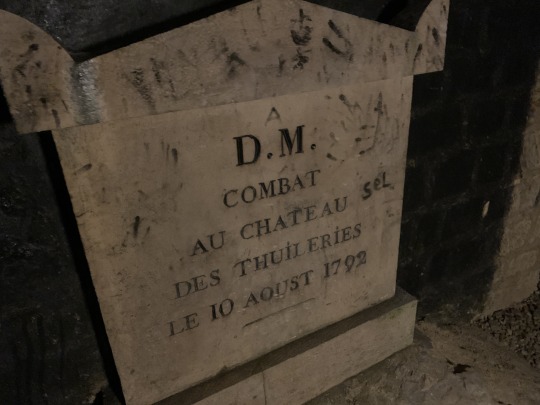
Cluny La Sorbonne station (Paris) It is on metro line 10 and the waiting tunnel is decorated with signatures of prominent French figures. It doesn't have any actual frev artifacts, but it looks cool and you can spot Robespierre, Danton, and Camille Desmoulins' signatures on the ceiling.
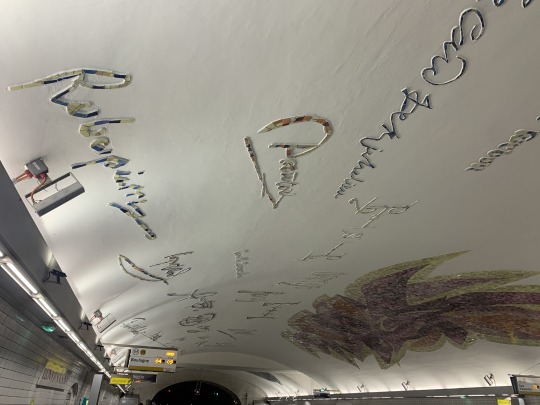
Louis le Grand (Paris) The school that Robespierre attended is still under the same name and still in use as a school! (i've reached the image maximum alas i cannot add more images...)
And that is all I can think of so far! There is surely a lot more that are out there (including outside of France). Once again, please feel free to mention if you know more frev landmarks that I missed out on. And to whoever happens to be travelling I hope you find this list helpful to start with.
239 notes
·
View notes
Text
People being kept out of the Duplay house compilation
…It was necessary, in order to reach the eminent guest deigning to inhabit this humble little hole of a place, to pass through a long alley flanked with planks stacked there, the owner's stock-in-trade. This alley led to a little yard from seven to eight feet square, likewise full of planks. A little wooden staircase led to a room on the first floor. Prior to ascending it we perceived in the yard the daughter of the carpenter Duplay, the owner of the house. This girl allowed no one to take her place in ministering to Robespierre's needs. As women of this class in those days freely espoused the political ideas then prevalent, and as in her case they were of a most pronounced nature, Danton had surnamed Cornelie Copeau "the Cornelia who is not the mother of the Gracchi." Cornelie seemed to be finishing spreading linen to dry in the yard; in her hand were a pair of striped cotton stockings, in fashion at the time, and which were certainly similar to those we daily saw encasing the legs of Robespierre on his visits to the Convention. Opposite her sat Mother Duplay between a pail and a saladbasket, busily engaged in picking salad herbs. Two men in military garb, standing close to her in a respectful attitude, seemed to be taking part in the duties of the household, obligingly picking herbs, in order to be free to chat more unrestrainedly under the shelter of this familiar occupation. These two men, since famous in their respective positions, were, the one General Danican, who since then, on the 13th Vendemiaire, became impressed with the idea that he was a Royalist, and who perhaps still retains the belief because he is one of England's pensioners; the other was General, later on Marshal, Brune. Freron and I told Cornelie Copeau that we had called to see Robespierre. She began by informing us that he was not in the house, then asked whether he was expecting our visit. Fréron, who was familiar with the premises, advanced towards the staircase, while Mother Duplay shook her head in a negative fashion at her daughter. Both generals, smilingly enjoying what was passing through the two women's minds, told us plainly by their looks that he was at home, and to the women that he was not. Cornelie Copeau, on seeing that Freron, persisting in his purpose, had his foot on the third step, placed herself in front of him, exclaiming: ”Well, then, I will apprise him of your presence," and, tripping upstairs, she again called out, "It’s Fréron and his friend, whose name I do not know." Fréron thereupon said, "It’s Barras and Freron," as if announcing himself, entering the while Robespierre's room, the door of which had been opened by Cornelie Copeau, we following her closely. Memoirs of Barras: member of the Directorate (1899) page 167-169, regarding a meeting he and Fréron tried to have with Robespierre following their return from Marseilles in March 1794.
Very little time before the cathostraphy where Camille Desmoulins was victim, Joseph Planche, the humanist, the old rhetorics professor at the Bourbon college, who was strongly tied to him, met him in the hooks around Rue de Tournon. Camille was concerned, and told him: ”I’m lost. I went to see Robespierre, and he refused to see me.” Historie de Robespierre et du coup d’état du 9 thermidor (1865) by Ernest Hame. According to J.M Thompson’s Robespierre (1935), Hamel obtained this anecdote from a friend of a friend of the mentioned Planche.
”…Try to see Maximilien, [said Charlotte Robespierre], you will be content; he was very glad that our younger brother saw you at Melun. On this occasion he spoke with interest of the exercises of your pupils and of the attention you had in entrusting him with presiding over them. I won’t introduce you to him, I would not succeed; I even advise you not to speak to him about me. You will be told he is out, don't believe it, insist on your visit.” The Robespierre family was housed on rue Saint-Honoré, near the Assomption chapel, the sister and younger brother at the front, the older brother at the back of the courtyard. Gaillard went to Maximilien’s apartment; a young man, looking at him with the most insolent air, said to him, barely having opened the door: “The representative isn’t home…” “He may not be there for those who come to talk to him about business, but that is not my doing; I will talk to him about his family that I know a lot, you have seen me come out of his sister's apartment who is involved in state affairs no more than I am... Bring my name to the representative, he will receive me, I’m sure of it.” The fellow did not dare refuse to carry a paper on which Gaillard had taken care to indicate himself in such a way as to be recognized, he immediately came back and gave the visitor his paper saying: “The representative does not know you,” and the door was violently slammed shut!… . The insolence of this brazen man whom Gaillard knew to be the secretary of Robespierre, son of Duplay, to whom the sister attributed the excesses of her brother, the sorrow he felt at losing the hope of saving the judges of Melun and to ensure his personal rest, all these thoughts made him very angry; he calls the young man a liar, insolent, he accuses him of deceiving Robespierre and of increasing the number of his enemies every day, all this in the loudest voice with the intention of being heard by Maximilien and lure him to one of the windows where, surely, he would have recognized him. New disappointment, no one appears and Gaillard goes back to tell Mlle Robespierre about his misadventure. “I prepared you for it, she told him. ”No one can approach my brother unless he is a friend of those Duplays, with whom we are lodging; these wretches have neither intelligence nor education, explain to me their ascendancy over Maximilien. […]” La Révolution, la Terreur, le Directoire 1791-1799: d’après les mémoires de Gaillard (1908) page 264-265. This anecdote gets described as taking place somewhere in May 1794.
4 prairial, year 2 of the French Republic, one and indivisible Nine o’clock in the evening a young girl presented herself at the house of citizen Duplaix [sic], asking to see Robespierre and saying that she had been looking for him for three hours. At the response made by citoyenne Duplaix [sic], the eldest daughter, that Robespierre wasn’t there, this young woman said that it was very surprising he was not at his house and showed a lot of impertinence and humor by saying that he was a public official and made to respond to all those who could come to his house; these threats obliged us to take her to the Committee of General Security. Signed: Chatelet. Note written by an agent May 23 1794. The ”young girl” in question is Cécile Renault. Cited in Histoire du tribunal révolutionnaire de Paris: avec le journal de ses actes (1881) by Henri Wallon, volume 4, page 5.
Those whom fate did not lead to the Duplay family presume that it was enough to be introduced to them to see Robespierre: they are wrong; I appeal to the testimony of all his former friends; not one could reach him: the entrance to his residence, similar to Tartarus, was constantly guarded by Cerberians who overshadowed everything... You, whom terror has compressed for so long, have you understood it well? No: to feel its full weight, compelling circumstances would often have had to drag you into its temple, where the sinister look of a Chalabre was sometimes equivalent to a death sentence; where once suspected your loss was sworn, which you accelerated even by no longer going there. À Maximilien Robespierre aux Enfers (1794) by Paul-Auguste Taschereau-Fargues, page 11.
A young and pretty person aged 17 to 18, accompanied by her aunt, arrives one morning, by carriage, at Robespierre's door, to ask for her father's liberation. These two women speak to Mother Duplay, who they ask if Robespierre is avaliable. “No,” this she-cat replies abruptly. This initial reception intimidated the young person so much that, without daring to open her mouth, she sadly returned to her carriage. As she was about to climb into it, she said to herself that the way in which she had been received was perhaps the result of a lack of formality towards this woman whom, due to her dirty and disgusting attire, she took for the servant of the house. She therefore returns, the 25 livres assignat in hand, to try to make the female dragon yield. Femme Duplay eagerly runs to meet her, and, grabbing her by the arm, says to her: “Now that you are alone, you can go up. Citizen Robespierre really likes young people your age.” This innocent girl got so disturbed that she immediately went back to her aunt, whom she told, completely frightened, about her adventure. Notes et souvenirs de Courtois de l’Aube, député à la Convention nationale, cited in La Révolution française: revue d’histoire moderne et contemporaine (1887), volume 12, page 929-930.
#robespierre#duplay family#frev#frev compilation#éléonore duplay#françoise duplay#simon duplay#charlotte robespierre#fréron#barras#forget guard dogs where can i get myself a guard duplay
32 notes
·
View notes
Text
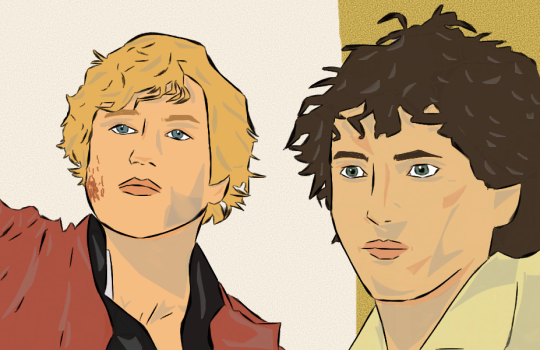
“What about me?’ said Grantaire. ‘I’m here.’ ‘You?’ ‘Yes, me.’ ‘You? Rally Republicans! You? In defence of principles, fire up hearts that have grown cold!’ ‘Why not?’ ‘Are you capable of being good for something?’ ‘I have the vague ambition to be,’ said Grantaire. ‘You don’t believe in anything.’ ‘I believe in you.’ ‘Grantaire, will you do me a favour?’ ‘Anything. Polish your boots.’ ‘Well, don’t meddle in our affairs. Go and sleep off the effects of your absinthe.’ ‘You’re heartless, Enjolras.’ ‘As if you’d be the man to send to the Maine gate! As if you were capable of it!’ ‘I’m capable of going down Rue des Grès, crossing Place St-Michel, heading off along Rue Monsieur-le-Prince, taking Rue de Vaugirard, passing the Carmelite convent, turning into Rue d’Assas, proceeding to Rue du Cherche-Midi, leaving the Military Court behind me, wending my way along Rue des Vieilles-Tuileries, striding across the boulevard, following Chaussée du Maine, walking through the toll-gate and going into Richefeu’s. I’m capable of that. My shoes are capable of that.’ ‘Do you know them at all, those comrades who meet at Richefeu’s?' ‘Not very well. But we’re on friendly terms.’ ‘What will you say to them?’ ‘I’ll talk to them about Robespierre, of course! And about Danton. About principles.’ ‘You?’ ‘Yes, me. But I’m not being given the credit I deserve. When I put my mind to it, I’m terrific. I’ve read Prudhomme, I’m familiar with the Social Contract, I know by heart my constitution of the year II. “The liberty of the citizen ends where the liberty of another citizen begins.” Do you take me for a brute beast? I have in my drawer an old promissory note from the time of the Revolution. The rights of man, the sovereignty of the people, for God’s sake! I’m even a bit of an Hébertist. I can keep coming out with some wonderful things, watch in hand, for a whole six hours by the clock.’ ‘Be serious,’ said Enjolras. ‘I mean it,’ replied Grantaire.
drawing by me
#enjoltaire#enjolras#grantaire#les amis#les amis de l'abc#victor hugo#les misérables#les mis#les miserables#enjolras x grantaire#aaron tveit#george blagden#les mis fanart
40 notes
·
View notes
Note
May I ask the Frev-related places in Paris you've visited/plan to visit? Such as the CSP table, where is that?
CSP table is at National Archives. I asked @robespapier for the exact description of the location: National Archives at the Hôtel de Soubise, 60 Rue des Francs Bourgeois.
From frev related things, I visited:
- Carnavalet
- CSP table at National Archives
- Pantheon
- Le Procope (also Danton's statue nearby)
- Père Lachaise (frev people graves)
- Palais-Royal
- Tuileries Garden
- Place de la Concorde (it was closed for construction so just from accross the street, from Tuileries)
- Duplay house at rue Saint-Honoré (well, just outside, the sign with Robespierre's name next to the ugly fancy shoes shop)
- SJ's building at rue de Caumartin
25 notes
·
View notes
Text
Robespierre siblings meet privatly with Joseph Fouché after the atrocities commited in Lyon (dubious historical accuracy)
( Not my typical post and not one which has no trustworthy sources listed but I thought it was a fun enough thing to share)
Fouché had first approached the Girondins, then, demonstrating the opportunism destined to characterize his long and troubled political career, he aligned himself with the positions of the Jacobins with the vote in favor of the death sentence of Louis XVI. This sudden political repentance had reinvigorated his friendship with Robespierre, allowing him to become a rather frequent visitor to the apartment in rue Saint Honoré, where he had had the opportunity to court, probably more out of calculation than out of love, the sister of the "Incorruptible", Charlotte. The marriage project, initially encouraged by Robespierre, had however vanished due to the wicked conduct of Fouché during his mission in Lyon. His predecessor, Couthon, had limited himself to attacking the symbols of Lyon's prosperity. In October 1793, after giving a violent speech, he had personally inaugurated the demolition of the aristocratic palaces overlooking Place Bellecour. The Convention had been disappointed by such a moderate approach and hastened to replace Couthon with Fouché and Collot d'Herbois. Without interrupting the city's demolition programme, which had indeed continued more quickly thanks to the use of gunpowder, the two deputies on a mission had undertaken to wash away the shame of the sedition with blood. Judging the guillotine too slow and inefficient, they had arranged for recourse to cannons loaded with grapeshot to carry out capital sentences. In April 1794, about ten days after the execution of the Hébertists, the most radical and extremist wing of the revolution, Fouché was called back to Paris to give an account of his work. Sensing the pitfalls of the new political climate, before leaving Lyon Fouché had taken care to send the executioner and his assistant to the gallows, cumbersome witnesses of the massacre he had perpetrated. However, this precaution had not strengthened his position. The Convention, still shaken by the elimination of Danton and Hébert, had coldly accepted his justifications, referring them to the Committee of Public Safety for consideration. In a private conversation, held in the presence of Charlotte, Robespierre had shown such contempt for Fouché's stammering apologies that it sounded not only like an official break in the engagement, but worse, like a death sentence, to be carried out at a later date. Instead of waiting with resignation for the indictment that would have led him to the guillotine, Fouché, animated by the strength of desperation, had decided to play in advance, challenging his powerful opponent. With unwavering determination he had pledged to weave a wide network of relationships within the Jacobin Club, where the brutality he had shown in Lyon was considered by many to be a patriotic merit.
By Roberto Poggi published by Pietro Visani - a study on the french revolution (A/N: i can't find much on these guys except that theyre published historians) via a repost on livejournal by @/quartopiano. the article embeds a link to a now unavailable page.
#dubious accuracy#untrustworthy sources#charlotte robespierre#maximillian robespierre#joseph fouché#frev#frevblr community#charlotte#robespierre#maximillian#fouché#frevblr#french revolution#additional note: i was using google translate to make this faster and instead of courting it gave me woo#fun#long post
39 notes
·
View notes
Link
0 notes
Link
0 notes
Text

Congrès national des droits civils et du suffrage des femmes à l'Hôtel des sociétés savantes, 8 rue Danton, Paris, du 26 au 28 juin 1908.
1 note
·
View note
Text

The Saint-Michel Fountain is a fountain designed by Gabriel Davioud and inaugurated in 1860 in the 6th arrondissement of Paris on Place Saint-Michel, at the intersection of Boulevard Saint-Michel and Rue Danton. ✝️
0 notes
Text
More than a café—un verre d'eau
If there were a clue worth holding onto it was the nail, the strongest point that alone, at first, fixed and recreated, the house.
But Pelican was not a detective and did not follow the process.
His eyes were old and full and after all the house his friends had spoken of still stood.
He tapped his fingers playfully on the wall
—tap! tap! tap!
He smiled a bit.
It seemed right to him, not at long last but right along the way.
"Where I've been. Where I am," he said and then sighing added—
"I'd like to return one day if only for a little while to drink something warm."
—Le Clou De Paris. Rue Danton, Paris. August 12, 1900
The last nail
A box A box examined. Examined with no gimmicks. This is a mystical escape, No calls from the clairvoyant beyond, Sheer death defying, Mystifying, Brutal, Survival. And yet, You think I’m condemning myself, Confined by the words I’m saying, Buried in the things we said to each other, Contorted. Foot in mouth. Cuffed by my own misgivings. If I can’t escape? You assert the blame rests on me. I built this box. I put myself in it. Why pull a crowd If I didn’t have the hubris for survival? And while these are my nails, My coffin, I can’t help but notice your veiny protrusions, Your fickle flexing fingers, On the grip of your well made hammer. Like adrenaline (Quietly controlled) Is searing you infedelious capillary beds So pound away, I see the cotyledons of greed in your eyes. You’re happy to bury this weary magician. See, if I can readily escape this impossible misconception.
The misdirection is thick, Hook, line in tow. Its not a slight of the hand, or the slip of your wrist The stakes arisen, With those final locked eyes. This is true magic, the crowd is in awe. The edge of their seats are not my onlookers. But your jury, bearing deliberation To your unequivocal conviction. With a flourish, you finish. The escape is a deadly ruse. Everyone is clued in on your vanishing act. With a wink and a tip of your hat, You acknowledge just that. I’m gone. In an examined box. In an unexhumed box. A box. But now that I’m dead, I have time to learn necromancy. Fuck you and your gimmicks. I will be transformed.
#writ so#le clou de paris#hol#house of leaves#mark z danielewski#the house#i feel conceded but when i read this pelican poem i just thought of my own writing?#the pelican poems
1 note
·
View note
Photo


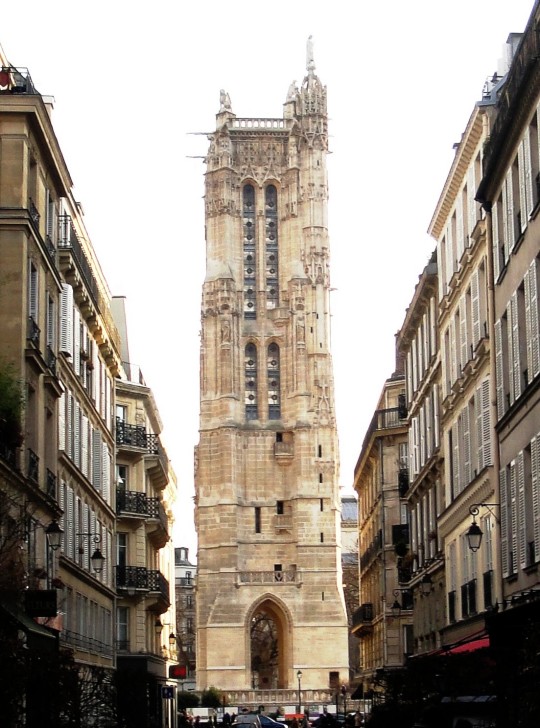

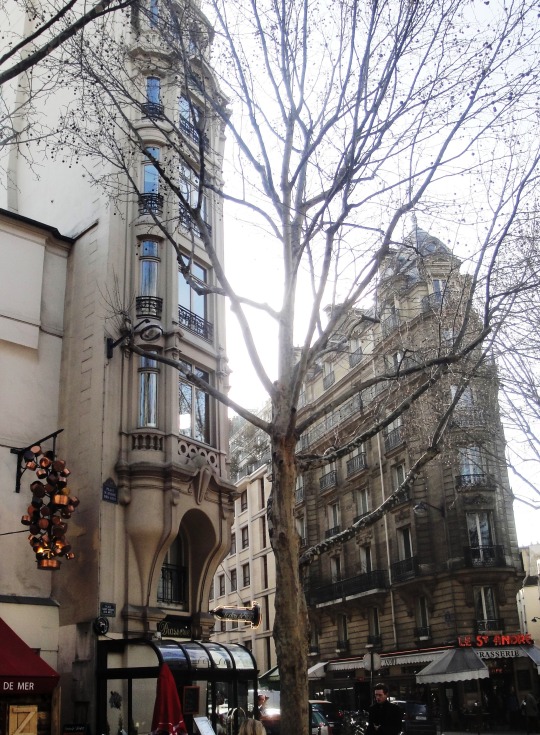
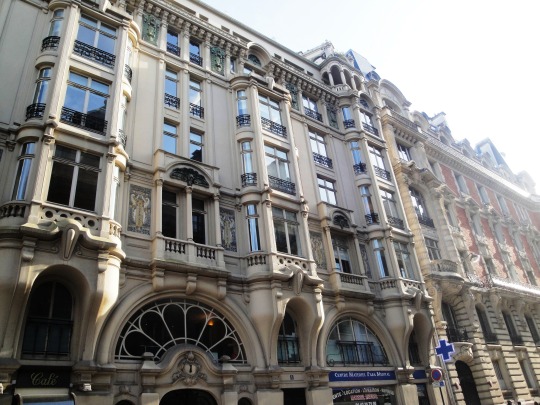
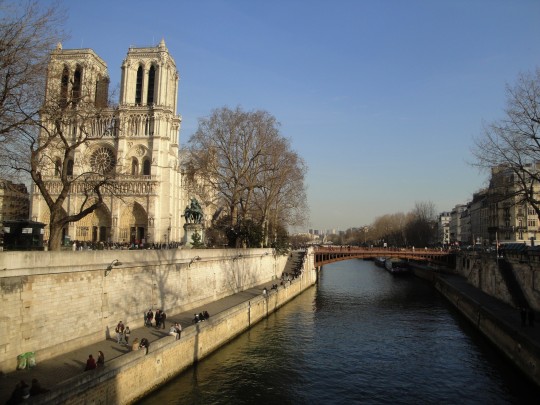
Je reviens à mon projet de présenter la plupart de mes 53800 photos (environ !)
2012. Une journée à Paris.
- les 2 premières : la Rue Hautefeuille et sa salière
- la Tour Saint-Jacques
- Métro Saint-Michel, style Art Nouveau
- Place Saint-André-des-Arts et Rue Danton (j’aime bien l’enseigne en casseroles de cuivre)
- Rue Danton (et NON, je ne rajouterai rien...même pas “Q”)
- Notre-Dame de Paris
#souvenirs#paris#rue hautefeuille#salière#architecture#médiéval#tour saint-jacques#métro#saint-michel#métro saint-michel#art nouveau#place saint-andré-des-arts#rue danton#casserole#cuivre#notre-dame de paris#seine#île de la cité
5 notes
·
View notes
Text
Contemporary descriptions of the dantonist execution compilation
Their trial was over around one o’clock in the afternoon. Only Luiner was acquitted. But as he was detained as suspect for the sake of general security he was escorted to the Luxembourg. The fifteen others were sentenced to death, and driven to the scaffold around six o’clock. They were in three tumbrils: in the first was Danton, next to Delacroix; Fabre near the executioner; Hérault opposite Chabot. In the second, Phelippeaux [sic], Westermann, Camille Desmoulins, Basire and Launai d’Angers [sic]. In the last tumbril, one saw but l’Abbé d’Espagnac; his companions were almost all strangers and little known to the public. Almost all approached death with the same audacity that they had shown in court. Danton, who, like Hébert, was recognizable by his red collar, seemed to pay little attention to the crowd around him: he was chatting with Lacroix and Fabre. Hérault was the quietest. Chabot pointed to the sky, laughing. Desmoulins spoke almost continually to the people; the courage he affected seemed like a painful effort, he was an actor who was studying to play his last part well. Diederichsen, danish lawyer, was executed first, the heads of Lacroix and Danton were the last ones to fall. Only that of Danton was shown to the people, among prolonged cries of ”vive la république.” Suite du Journal de Perlet, number 561 (April 6 1794). A shortened version of this description is given in number 104 of Journal général de la guerre (April 13 1794). According to Michel Biard’s La Liberté ou la mort: mourir en deputé 1792-1795 (2015), these were the only contemporary journals that mentioned any details regarding the execution.
Camille had made incredible efforts to tear herself away from these execrable gendarmes, who have been the lowest servants of despots; so that in going to the scaffold he was completely naked to the waist, because his shirt was in tatters. I saw him cross the space of the palace at the Place de Sang (that's what I called Place de la Révolution) with a frightened air, talking to his neighbors with great agitation, and yet on his face was the convulsive laughter of a man who no longer has his head. Dictionnaire neólogique des hommes et des choses, volume 2, page 480 (1799) by Louis Abel Beffroy de Reigny. In his Testament d’un électeur de Paris (1795) Beffroy adds that he couldn’t restrain his tears in watching Camille pass by.
I saw the tumbrils pass by to the place of execution, containing the men who, a few days before, had been seen as those who were to consolidate the revolution. Some maintained a firm and calm demeanor, others only showed on their faces that humiliating vexation felt by a scoundrel who finds himself caught in the trap set up by his enemy. This feeling was depicted with the most striking expression on the decomposed countenance of Danton. Camille Desmoulins seemed indignant at the deceit of Robespierre, who had never showed him more friendship than on the eve of his arrest. Bazire and Chabot tried to speak to the people by whom they were surrounded; though they spoke loudly, the noise which was made around them drowned out their voices. One only heard them say that, had not Marat been assassinated, he would have been accused of conspiracy like them, and that with them he would go to his execution. The multitude regarded as blasphemous an assertion of which the truth, a few days later, was disputed by no one. They were executed on 17 germinal. Histoire Philosophique de la Révolution de France (1807) by Antoine Étienne Fantin-Desodoards, volume 5, page 371-372
Like Hugues Aubriot, who was imprisoned in the Bastille he had had built in order to trap others, when Danton had been condemned to death by the tribunal he had instituted, the crowd gathered in the square to feast their eyes on the horrible spectacle that the cries of the public promised them. I was going to see Méhul, who was by then living on Rue de la Monnaie, when I came across the tumbril in Rue Honoré in which this revolutionary hero was for the last time presiding over his stricken party. He was calm, between Camille Desmoulins, whom he listened to, and Fabre d'Églantine, who did not listen to anyone. Camille spoke with great warmth, and struggled so much that his unfastened clothes left his collar and shoulders, which the blade was about to separate, bare. Never had life manifested itself in him by more activity. As for Fabre, immobile under the weight of his misfortune, overwhelmed by the feeling of the present and perhaps also by the memory of the past, he no longer existed. Camille who, by cooperating in the revolution, had thought he was cooperating in a good work, still enjoyed his illusion; he believed himself on the road to martyrdom. Alluding to his last writings, he shouted: “My crime is to have shed tears!” to the crowd. He was proud of his conviction. Fabre was on the other hand ashamed of his, he, who had been pushed into revolutionary excesses by less generous interests, was overwhelmed by the awareness of the truth. He saw only torture at the end of the little road that remained for him to travel. Another physiognomy also attracted my attention in this cartload of reprobates, it was that of Hérault de Séchelles. The tranquility which reigned over the handsome face of this former advocate-general was of a different nature from the tranquility of Danton, whose face offered a caricature of that of Socrates. Hérault's calm was that of indifference; Danton's calm that of disdain. The pallor did not sit on the latter's forehead; but that of the other was colored with such a fiery tint that it looked less like he was going to the scaffold than returning from a banquet. Hérault de Séchelles finally seemed detached from life, the preservation of which he had purchased by so much cowardice, by so many atrocities. The appearance of this selfish man astonished everyone: everyone asked his name with interest, and as soon as he was named he no longer interested anyone. […] I went up to Méhul's, and, my imagination full of what I had just seen, I told him: “Tragedy well begun! I want to see the end of it, after having finished in three words the business which brought me. This Danton really plays his role well. We are all on the eve of the day that will end for him. I want to learn how to pass it well too.” "Useful study," said Méhul, who saw things with the same eye as me, and who would have accompanied me if he hadn't been in his dressing gown and slippers. However, the fatal tumbril had not stopped moving; the execution was beginning when, after having crossed the Tuileries, I arrived at the gate which opens onto the Place Louis XV. From there I saw the condemned, not mounting together, but appearing one by one on the fatal scaffold, to die immediately by the effect of the movement which the board or the bed on which was about to begin for them the eternal rest. The rest of the operation was hidden from me by the operatives running it. The accelerated fall of the blade alone told me that it was was being carried out. Danton appeared last on this scene, flooded with the blood of all his friends. Day was falling. At the foot of the horrible statue whose mass stood out in a colossal silhouette against the sky, I saw the rising, like a shadow of Dante, of this tribune who, half-lit by the dying sun, seemed as much to emerge from the tomb as ready to enter it. There is nothing as daring as the countenance of this athlete of the revolution; nothing as formidable as the attitude of this profile which defied the axe, like the expression of this head which, ready to fall, still seemed to dictate laws. Horrible pantomime! time cannot erase it from my memory. I found there all the expression of the sentiment which inspired Danton with his last words; terrible words which I could not hear, but which people repeated to each other, quivering with horror and admiration. ”Above all, don't forget,” he said to the executioner with the accent of a Gracque, don't forget to show my head to the people; it’s worth seeing.” At the foot of the scaffold he had said another word worthy of being recorded, because it characterizes both the circumstance which inspired it, and the man who uttered it. With his hands tied behind his back, Danton was waiting his turn at the foot of the stairs, when his friend Lacroix, whose turn had come, was brought there. As they rushed towards each other to give each other the farewell kiss, a policeman, envying them this painful consolation, threw himself between them and brutally separated them. "At least you won't prevent our heads from kissing each other in the basket," Danton told him with a hideous smile. Danton, as I have said, perishes as a result of a security more justified by reason than by politics. Warned of Robespierre's plans, Robespierre knows too well that he cannot send me to the scaffold without proving that he can be sent there himself." Resting on this idea, he fell asleep in laziness and pleasures. Souvernirs d’un sexagénaire (1833) by Antoine Vincent Arnault, volume 2 page 95-100. According to Biard in Danton: Le mythe et l’histoire (2016) this is the only semi-authentic source we have for Danton’s last words being ”show my head to the people, it’s worth seeing.” It’s still however somewhat dubious considering Arnault places Camille in the wrong tumbril.
#happy deathday dantonists!!#camille desmoulins#fabre d’eglantine#pierre philippeaux#herault de sechelles#and everyone else who was executed tbh#yes even you unknown danish lawyer#french revolution#frev#frev compilation#george danton#danton#did i seriously forget to add a Danton tag…
61 notes
·
View notes
